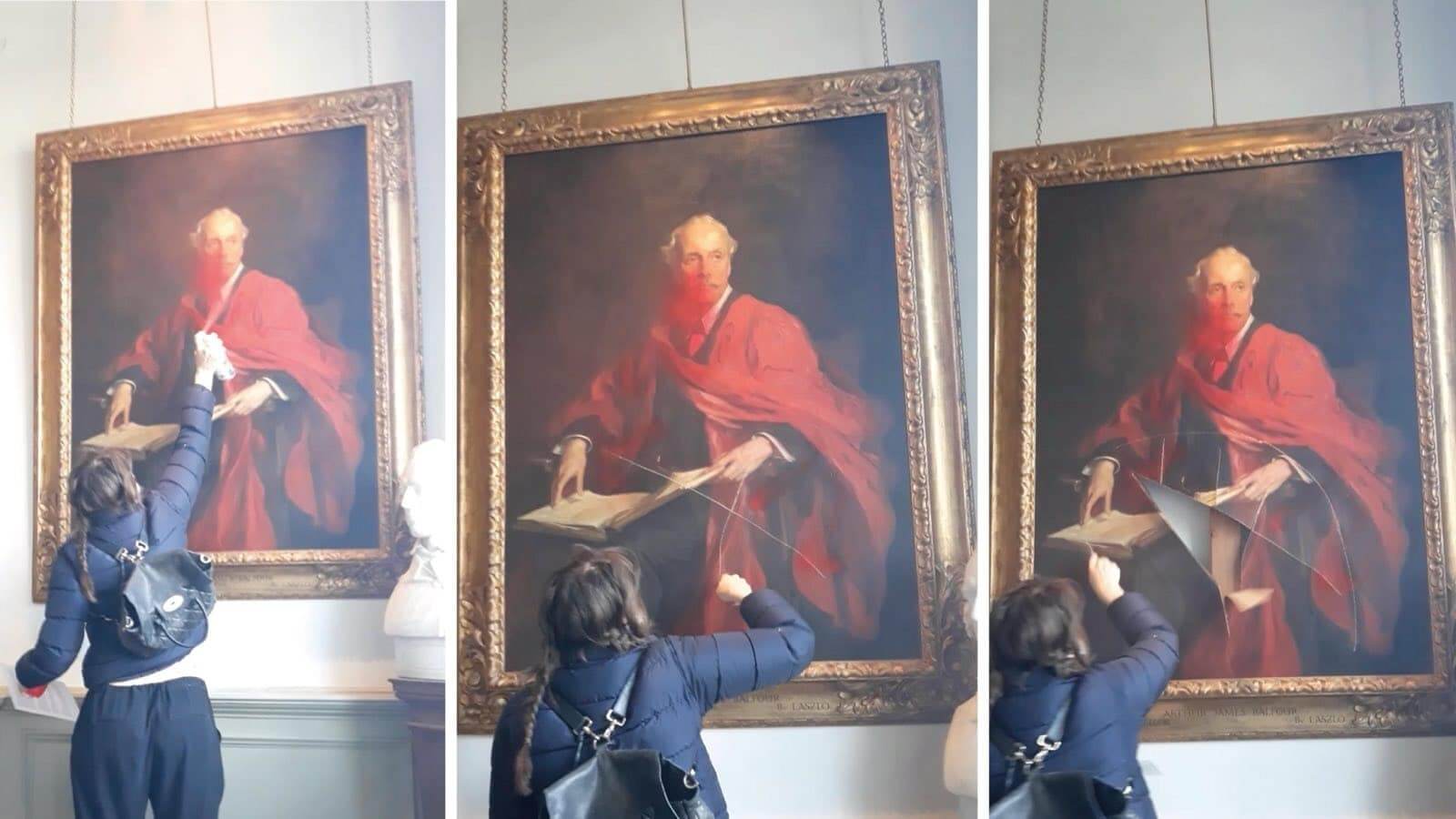Activists destroyed a portrait of Balfour to commemorate ‘the bloodshed of the Palestinian people’
Many see the Balfour Declaration as a step toward the creation of Israel

Activists damaging a portrait of Lord Balfour. Courtesy of Palestine Action
Pro-Palestinian activists destroyed a century-old portrait of Arthur James Balfour in the U.K. on Friday, slashing through the canvas and spraying red paint across the oil painting.
A group called Palestine Action took credit for the incident, saying in a statement that the actioj was meant to evoke “the bloodshed of the Palestinian people since the Balfour Declaration was issued in 1917.”
The portrait hung in Trinity College at the University of Cambridge, Balfour’s alma mater. It was painted in 1914 by Philip Alexius de László, a Hungarian painter, who was born Jewish but converted to Catholicism as an adult.
In the early twentieth century, Balfour was the U.K.’s foreign secretary, during which time he issued the Balfour Declaration. The 1917 statement by the British government announced their support for the creation of “a national home for the Jewish people” in what was then Ottoman-controlled Palestine.
The Balfour Declaration is widely recognized as a landmark moment, and laid the groundwork for the eventual creation of the state of Israel; it was one of the first official statements of support for Zionism by a major government, and increased support for Zionism within many Jewish communities that had previously ignored the idea of a state.
The declaration led to meetings between Jews and the British government about what to do with the land after the end of World War I, but the local government and populations residing in the area were not included in these discussions. Still, the declaration didn’t totally ignore the reality on the ground; it called for safeguarding the religious and civil rights of the Arab populace, and implied that the Jewish state would not cover the entire area.
However, the declaration was likely not a purely ideological statement of support; it probably a political move, part of an attempt to secure Jewish support for Britain during the war, or, as some contended, even an antisemitic attempt to convince Jews to leave the U.K.
Nevertheless, the Balfour Declaration is regarded by Jews and Palestinians as one of the first, monumental steps toward the creation of Israel, and has become increasingly controversial over the years. In 2017, Mahmoud Abbas called for the U.K. to apologize for issuing it, though the request was denied.
The destruction of the portrait is part of a trend in recent years of defacing art as a form of protests — activists have flung soup at various paintings. But previous demonstrations have not resulted in permanent damage to the paintings, which were often behind glass. The Balfour portrait, on the other hand, was effectively destroyed.















